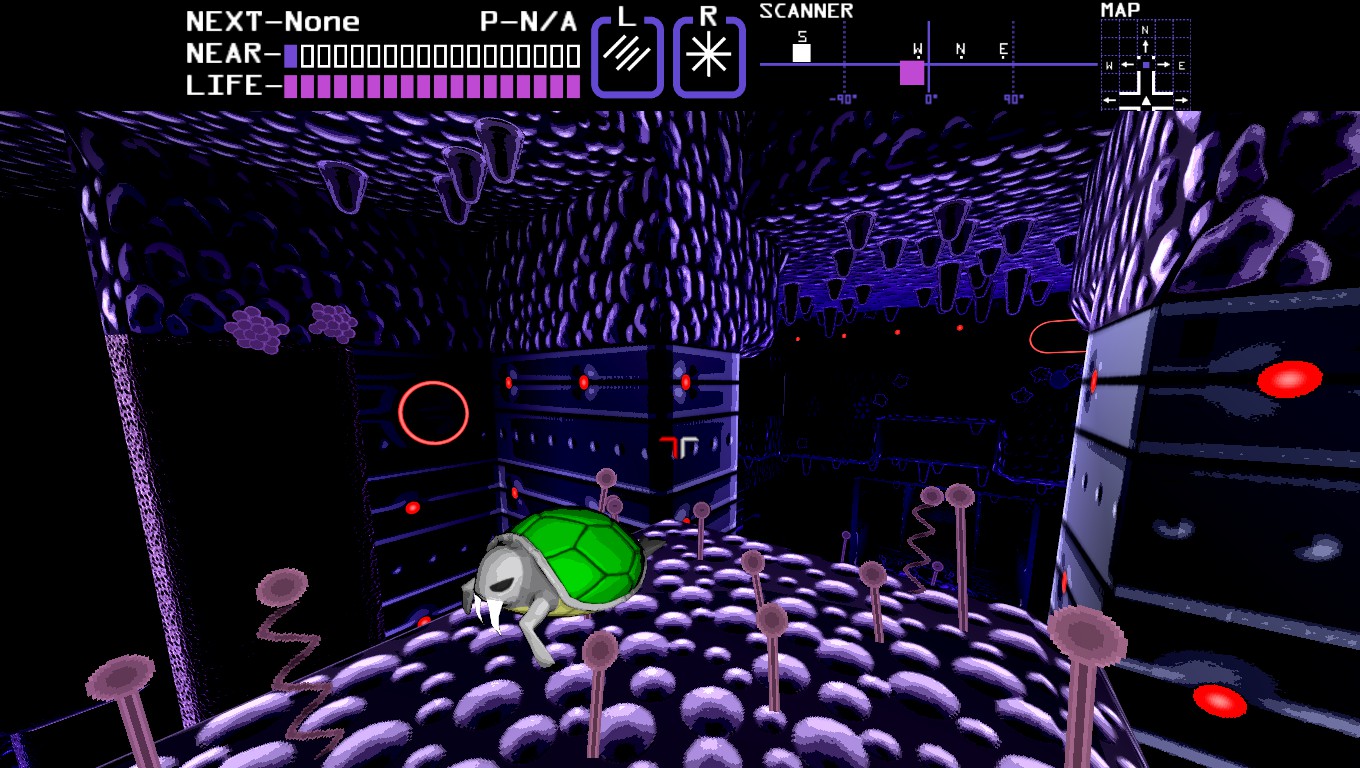Biodrome channels Metroid and Quake for exploratory speedrunning

Taking place the same weekend as PAX Prime, only a few blocks up the road from the mega- and giga-booths of its exhibit halls, is a much smaller but equally interesting event: the Seattle Indie Expo. Designed to give a homier venue to a cadre of local developers, the SIX showcases a group of panel-selected games from Seattle creators. Amongst the group this year was a 3D puzzle-platformer called Biodrome, an “asynchronous competitive multiplayer exploration game" that looks like a mish-mash of 8-bit Metroid and Quake's early 3D.
Biodrome’s premise is an Alien-inflected sci-fi exploration mission. Every new game drops you into a procedurally-generated world created by an alien culture using genetic engineering, making huge organic structures teeming with friendly and hostile creatures. Friendlies will attach themselves to your space suit and provide new abilities. The game functions on an algorithm that creates worlds, populates them with life, and devises traversal puzzles that will require the player to use equipment upgrades and familiar items like Zelda-style hook chains in different combinations.
Running around in these environments has a propulsive energy lifted directly from the game’s primary influence: speedruns of old Metroid and Castlevania games. Designer Pete Hufnagel came to the genre late in the game, becoming interested in the methodology of exploration games via speed runs on YouTube in 2007. The last eight years he’s been gestating Biodrome as a nights-and-weekends passion project, hoping to translate the elements of discovery and competition to a new generation of explorers.

I hovered over Hufnagel’s booth as he fielded a steady stream of interested players. The game is more intuitive than I would have thought at first glance; there’s a highly functional mini-map and straight-forward tool instructions and I never caught anyone glancing down at their keyboard in mystery. Once we got talking about his more obvious influences (Alien, Castlevania, Ninja Gaiden, Zelda II, Quake) out of the way, Pete mentioned the most recent Wolfenstein and the satisfying feel of its weapons. Some of his trial players nodded in agreement. There’s a similar feedback with the weaponry on display in Biodrome.
Level layouts can be surprisingly vertical, driving players up walls via climbing tools and rocket jumping. Just in the time I was there, Pete pointed out a couple of unique environmental randomizations he hadn’t seen come up before, or a player using an inventive method of traversing the environment.
Biodrome’s multiplayer element is simple and not especially adversarial; it’s primarily interested in encouraging you to keep the idea of speedrunning in mind. Players compete to be the first to entirely explore an area, to get to any secret areas first, and to collect the most of the alien eggs scattered around the environment. There’s a chat system built in as well, though it’s intentionally rudimentary.

Hufnagel has scored the game himself with a dark, Sega Genesis-like synthscape invoking early Joy Division or Siouxsie and the Banshees, creating a gauze of eeriness and unease.
Keep up to date with the most important stories and the best deals, as picked by the PC Gamer team.
Biodrome is still in pre-alpha, with a ways to go before it’s available for a public beta. There are still some small issues with UI changes, world maps, the messaging system, making some of the environments look more varied, and layering in more narrative material. Hufnagel also commented that he was still looking for a like-minded artist who could retain the style of his own current assets but improve and iterate upon them, and I can see that a bit more aesthetic polish would bolster the game’s presence.
Having said that, even unfinished, Biodrome looked smartly designed and accessible to curious players driven to rocket-jump their way through hostile and sometimes bizarre alien worlds.

